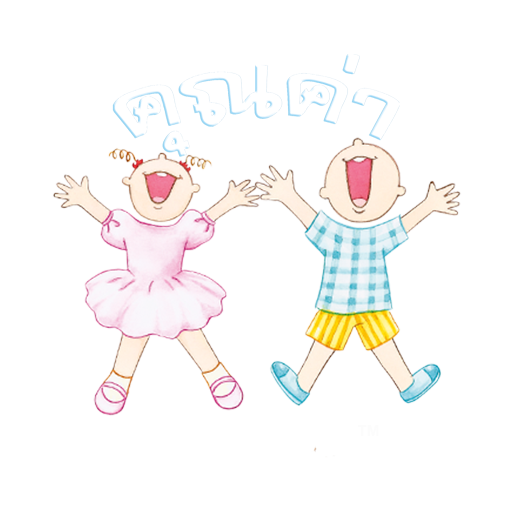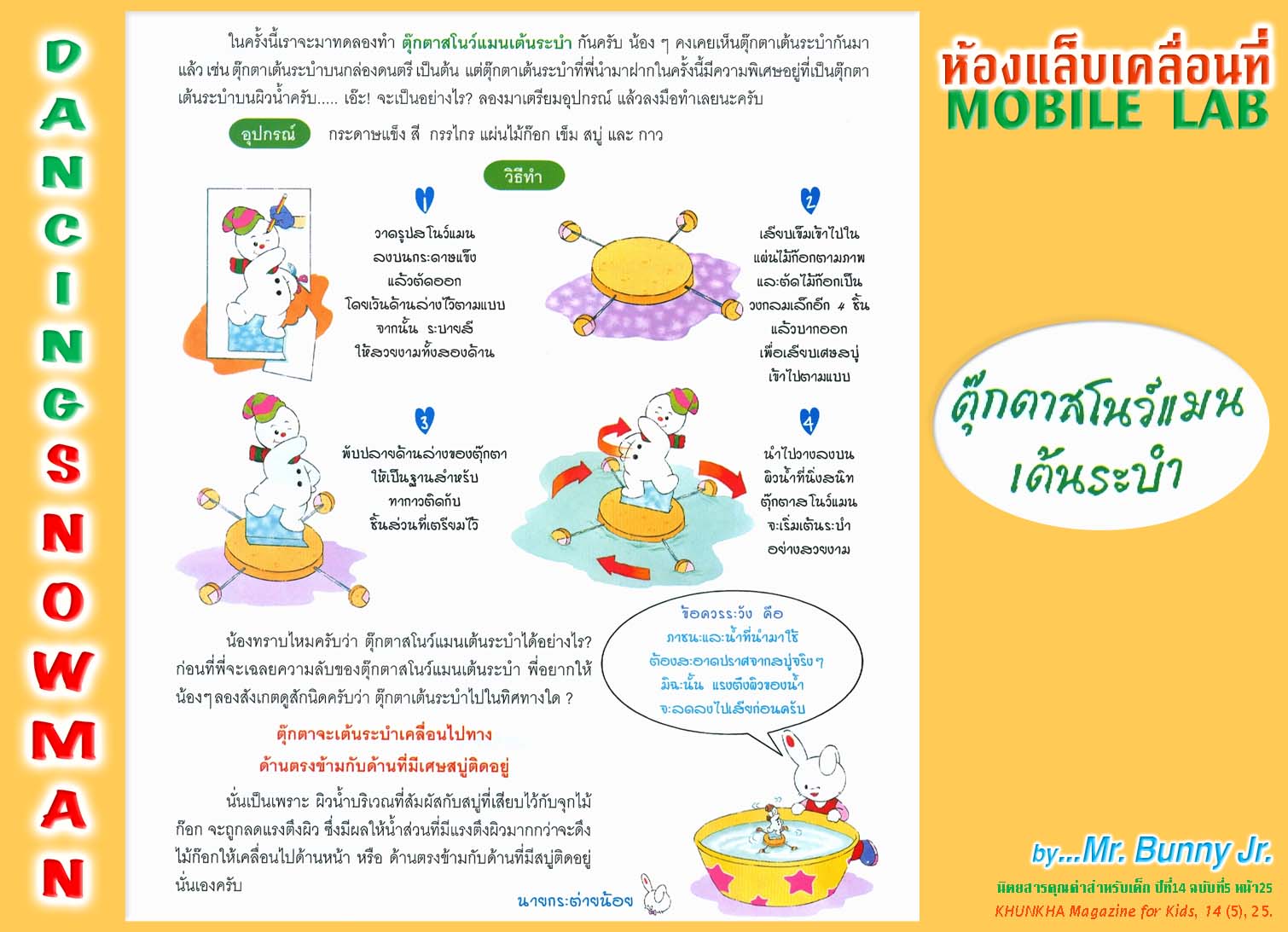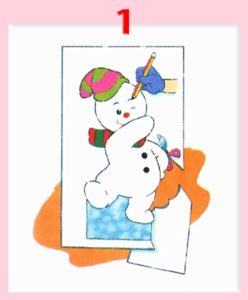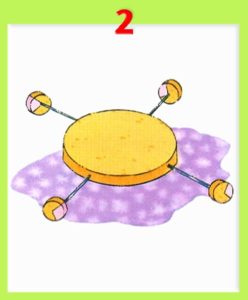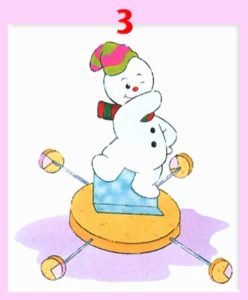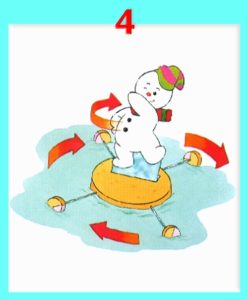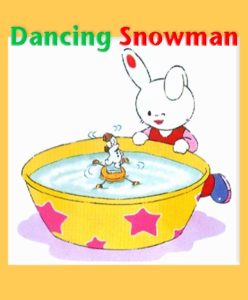You’re about to find out how to make a cute little snowman dance. And, if you’ve ever wondered how, just carefully read the method below. Then it’s time to make your own experiment.
Mobile lab is one of the interesting columns from Khunkha Magazine, filled with so many experiments. Dancing Snowman, the first fun and easy experiment, is translated into English; therefore you can enjoy reading bilingual.
Water has many amazing properties and one of them is Surface Tension. After trying this experiment, you may create your own and share with your friends.
Please keep following us here because a lot more fun and fascinating Mobile lab stories will be coming soon.
To view full picture in PDF please click the link mobilelab1dancingsnowman
What you need
Watercolor paper, paint, scissors, cork sheet, needles, soap bar and glue
What to do
- Draw a snowman on the paper and cut as shown in the picture (don’t forget the snowman’s base). Then paint both sides.
- Cut the cork sheet into 1 big circle and 4 small circles. Cut each of 4 small cork sheets out one quarter and fix 4 pieces of soap (which already cut in the same size and shape) to the hole of each small cork sheet. Then insert 4 needles into the side of big circle cork sheet and put 4 small cork sheets at the end of 4 needles (See picture 2).
- Fold the base of snowman as shown and glue it on top of the big circle cork sheet. Wait until the glue dry.
- Carefully place your snowman onto the surface of still water.
Now you can see the snowman dance beautifully.
Notice: Make sure that both water and the container are free of soap.
When the water touches the soap at the cork sheets, the water’s surface tension around the touched point will be reduced. The snowman on the cork sheets will be pulled toward the higher surface tension areas. So you can see it move to the opposite side of the soap.
The Nature of Water: Water molecules move from areas of low surface tension to areas of higher surface tension.
